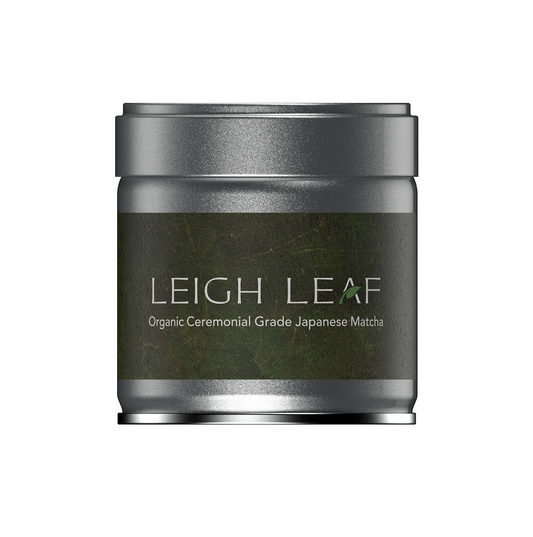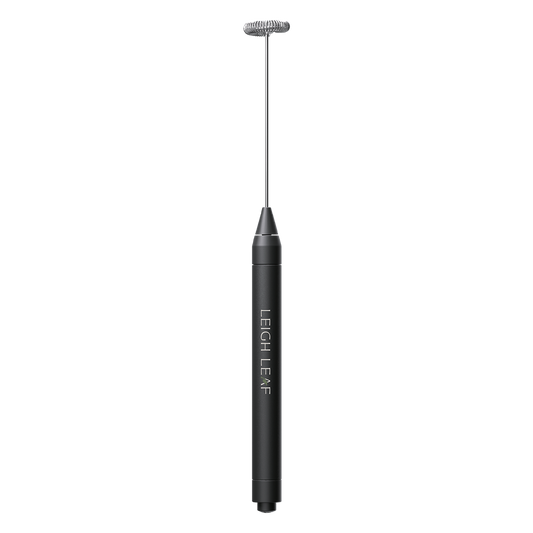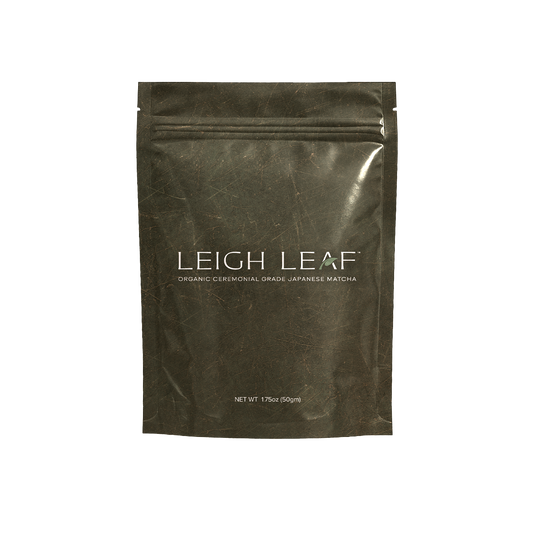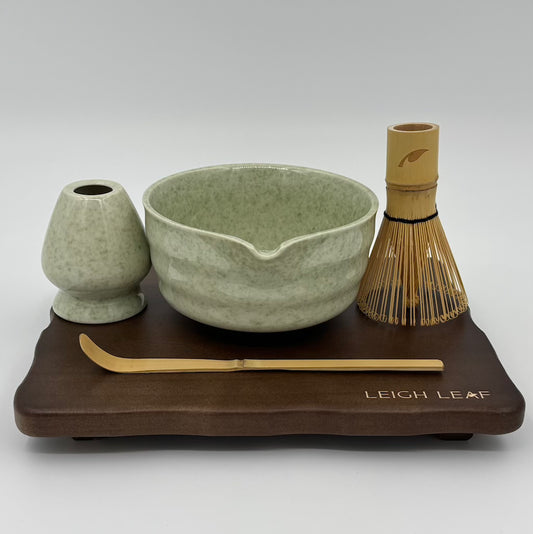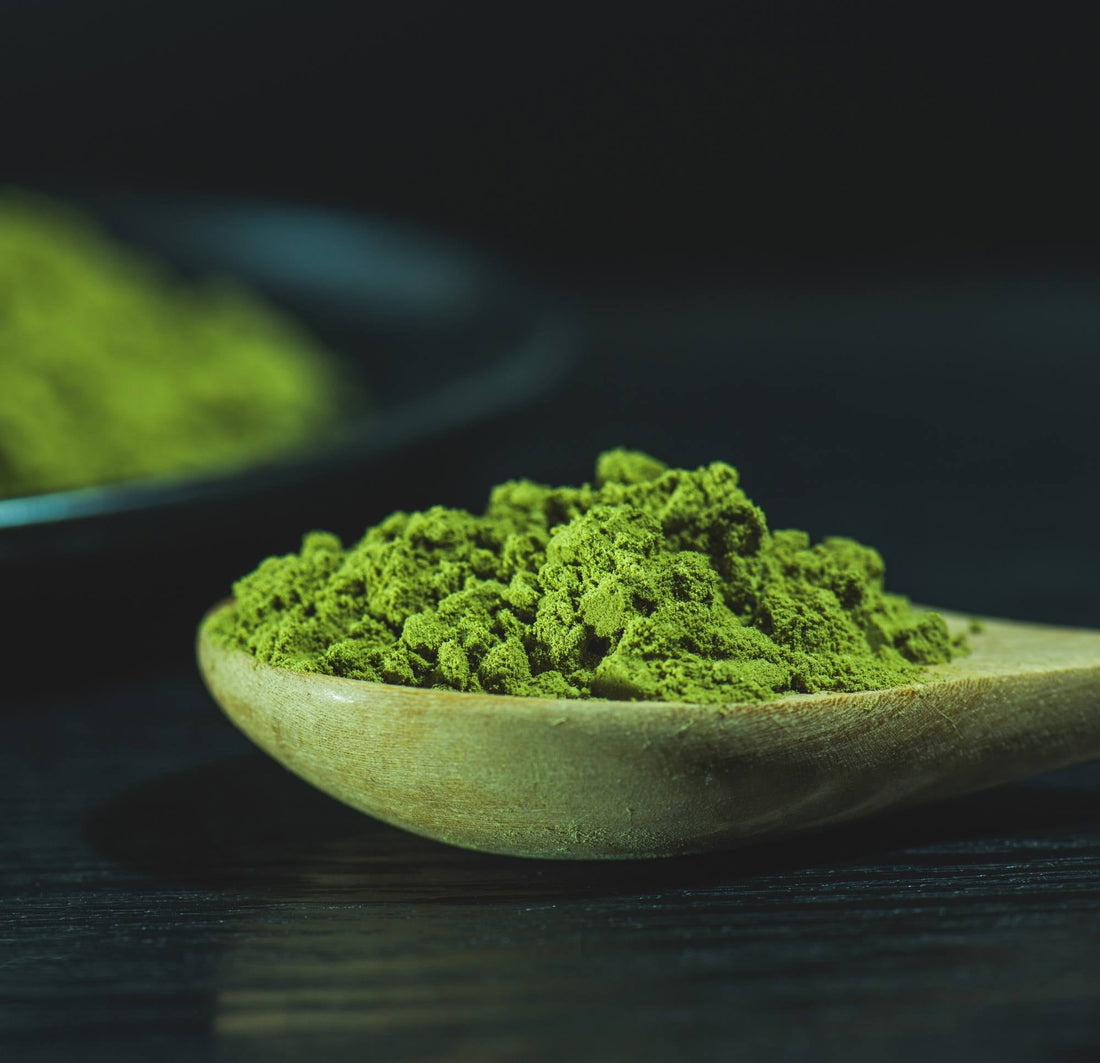
What Is Matcha
Share
Have you ever seen a green smoothie and thought to yourself, “What is Matcha?” Well, there is a chance it could be one of the best kept secrets of all time: matcha tea. Tag along as we tell you more about this essential Japanese tea that has found its way into other beverages, food items and more. Drinking matcha has become a part of people's lifestyles, and here we will discuss the tea, its taste, how it is cultivated, produced, and harvested, and how you can prepare some for yourself.
Table of content
What Is Matcha?
Matcha tea has its roots in traditional Japanese culture and is a high-grade green tea. The matcha powder is whisked, not seeped, with piping hot water to form a frothy and foamy drink. Matcha making is a meditative process. In the Japanese tea ceremony, it is an important part. The tea powder is now found across the globe in beverages such as boba tea or matcha lattes, and it also makes for an interesting ingredient in desserts and salads. Culinary and ceremonial grades of matcha are available, however it costs more to buy the former than the latter. Culinary grade matcha is also used in lattes, desserts, and cooking.
Matcha Origins
Before teapots were invented, tea leaves were ground into powder and they were whipped in a bowl with hot water. The Chinese later abandoned the whipped or beaten tea for the steeped tea leaf process once teapots were invented. However, the Japanese went on to popularize the abandoned method, which is where matcha comes in.
Matcha's origins can be traced back to a Japanese Zen priest studying in one of the Buddhist monasteries in China and returning to the country in the 12th century with tea plant bushes and seeds. The priest, Eisai, used his learnings from China about growing and drinking whipped or beaten tea and popularized it in Japanese culture as a tea meditation ritual among the Japanese Buddhist monks. Eventually, this custom spread across the rest of the country.
The samurai class in Japan also adopted the Japanese tea ceremony. The fearsome yet cultured warriors, who were high-ranking members of the cate society in the country, developed the matcha tea ceremony into a cultural tradition and art form by adding many steps to the practice, which included a specific tea room design, certain hand movements, and instructions on how to sit, prepare and sip the tea. The entire tea ceremony was also an integral aspect of samurai training, which helped the warriors concentrate and sharpen their focus and patience while preparing for battle.
The Way Of Tea is another name for the Japanese tea ceremony. It is a revered practice in the country and revolves around meditatively making and presenting matcha tea. The Japanese tea ceremony originated as a spiritual practice, and its many principles, such as respect, purity, harmony, and tranquility, remain central.

How Matcha Is Different
Matcha powder is made from the leaves of the Camellia sinensis plant. The plant is cultivated and processed very differently than any other form of tea.
- Shades grown: Matcha green tea powder is made from tea leaves grown in the shade. In this process, the tea bushes must be protected from the sun and are labor-intensive. Its light is filtered and reaches the bushes in a controlled way. The shading technique boosts chlorophyll production in the plant, giving it a vibrant green color. Lack of complete sunlight reduces the photosynthesis process of leaves, which alters the caffeine, sugar, flavonols, theanine, and antioxidant levels of the plant that occur naturally. By controlling exposure to the sun, tea producers can change the chemical composition and fragments of the plant as well as the flavor of the tea leaves.
- Seasonal: Only the freshest spring buds and leaves of the shade-grown plants are plucked by hand for the matcha tea production. Hence, the production window is limited, which is one reason matcha is a more costly tea.
- Steamed: In lime Japanese teas, the matcha tea leaves are first steamed, then briefly treated with steam after a few hours of plucking. This brings out the green color of the leaves as it halts the oxidation process of the shade-grown leaves. The steaming procedure gives the leaves a unique flavor, often considered vegetal and sweet.
- Stone ground: Instead of being dried, rolled, and shaped like conventional green tea leaves, the matcha tea leaves are laid on a flat surface to dry, becoming tencha. These leaves are then stripped of their veins and stems, and the remaining material is ground slowly in stone mills, yielding a smooth matcha powder.
- Consumption vs. extraction: Tea leaves are steeped in hot water first. This enables the flavor to be extracted and the chemical properties of the leaves to be brewed into tea, which is then sipped. However, matcha green tea powder is whisked into hot water and then suspended in water for consumption.
Types of Matcha
Matcha powder is grown across Japan, and the tea maker in each region will produce a slightly different tea from the other. There will be a slight difference in flavor because of the method and natural conditions, such as sunlight, water, soil, etc., which affect the color and taste of the green tea leaves. However, matcha tea is sold in two grades:
- Ceremonial grade: This is the highest quality grade of matcha that comes from carefully and delicately cultivated buds and leaves. This high-quality matcha gets the most attention to detail during the yielding process; it has the smoothest ground matcha with a delicate taste. Ceremonial grade matcha tea is meant to be enjoyed with no other additives or sweeteners to experience the authentic and intended flavor. Tea of this grade also usually costs a lot more than the culinary grade.
- Culinary grade: This type of matcha has a more astringent, robust flavor that can stand up to and complement other ingredients well. This is likely to be duller than the ceremonial grade, and it can also include matcha powder from many sources. This grade can also be whisked into tea, and it can also be mixed into lattes, cocktails, spirits, and even desserts. This matcha green tea powder is also less expensive than its ceremonial counterpart. It is an affordable cooking ingredient that you can stock up on.
Caffeine Content in Matcha
Typically, the amount of caffeine content is higher in matcha than in green tea. It is similar to the caffeine present in black tea. However, the content is less than that present in brewed coffee. Matcha is produced from tea bushes that are grown in the shade. Hence, the leaves retain most of the caffeine content. Also, when you consume matcha, you take ground tea leaves and ingest more caffeine in the process than you would from the steeped black or green leaves.
However, the caffeine content will differ depending on the quantity of the tea and how much matcha was processed while preparing it. Read the packaging carefully or contact your tea supplier to understand more about the caffeine information regarding the matcha powder you are buying. As matcha is whisked into hot water, it has a unique richness that the extraction of brewed tea leaves does not produce. Some common traits that describe the texture and flavor of matcha products include being sweet, rich, vegetal, wheatgrass, creamy, full-bodied, slightly astringent, foamy, and frothy.

How to Buy and Store Matcha
Matcha tea is best enjoyed soon after its production. Due to its ground nature, ground tea will degrade in flavor and color when exposed to oxygen. If you store it in a dark and cool place, it will remain fresh for many weeks and up to a few months, which is not the case with dried tea leaves that only last up to two years. To ensure you are getting matcha powder that is fresh, you need to buy it from a renowned company such as ours, Leigh Leaf, which can tell you how the tea was packaged and processed and provide you with all the information you need to start on the matcha tea journey. Ask your tea purveyor for more information on brewing the best matcha cup or for a specific matcha variety.
Preparing Matcha
To prepare matcha, you need to remember that it is different from your usual brewed tea. You can easily make matcha if you have the right tools. Here are the steps to follow to make yourself the perfect matcha cup to sip on:
- Take 1/3 cup or 100 mg of water and boil it. Then, let it cool for about three minutes.
- Add a bowl of 1/2 teaspoon matcha powder and a splash of piping hot water. With the help of a bamboo whisk, form a smooth paste for the matcha.
- Add the remaining water to the bowl and use the bamboo whisk to stir it and flick it back and forth until the powder is well incorporated. You will see a thin layer of foam on top.
- Sip it and enjoy!
Tips
Now that we have covered how to make a cup of matcha, let's look at some tips. Following is the information that you can count on to prepare the perfect matcha cup.
- Use a small wire whisk or a spoon if you do not have a bamboo whisk. Though you won't get the same frothy foam texture from the bamboo whisk, it is an excellent makeshift arrangement.
- The water you pour over the match should not be very hot or less warm either. Boiling water can make the green tea taste bitter.
- If you want a thicker matcha, use 1/4 cup of water, and if you want a thinner beverage, use more water, increasing it to 1/2 cup
- If you want to make a latte, replace the water with your preferred choice of water, coconut, regular, soy or almond
- Pour the matcha that you have just prepared over a glass of ice for a cold beverage
How Does Matcha Work?
In the form of a finely ground powder, matcha is a traditional Japanese tea. It is whisked with hot water to form a foamy green tea packed with flavor. The taste of high-quality matcha is refreshing. It is broadly categorized into two grades: ceremonial and culinary. Matcha is an essential aspect of the Japanese tea ceremony and is almost a meditative practice. Mixing the matcha powder in hot water requires mixing with a bamboo whisk to form a thick paste. Depending on the beverage you want to sip, you can add more water or milk.

How Does Matcha Taste?
Matcha has a pleasant, vegetal, sweet, and earthy taste. This flavor is also called umami, making drinking matcha more enjoyable. Umami is a term used in Japanese culture to describe the fifth flavor that follows sour, sweet, bitter and salty.
People often describe matcha as sweet, with a nuttiness and mellow grassy vegetal notes. It also has a sharp touch of acidity. If the taste of matcha is bitter, it is likely because the water poured over it was boiling, which can ruin the taste as it burns the fine tea powder. It could also be because it has oxidized, is of poor quality, or is old.
Where Does Matcha Come From?
Matcha is made from the green tea leaves of the Camellia sinensis plant grown in shade. The tea is specifically cultivated to be prepared as matcha and is usually grown in Japan's Kyoto, Aichi, and Nishio regions. The shade-grown leaves receive controlled sunlight, which allows them to increase their chlorophyll content and retain caffeine.
Matcha is also mostly formed in the fresh spring leaves and buds of shade-grown plants. To make matcha, they must be manually plucked. Hence, the production window for the tea is limited, which is also why the tea is costly. The Japanese tea ceremony is complete with matcha. It is graded into two types: ceremonial and culinary. The ceremonial grade is used only for the Japanese tea experience and costs more, while the culinary grade can also be used to make lattes, cooking, and desserts.
How Does Matcha Look?
Matcha is a green tea powder. The leaves of this tea are laid out to dry on a flat surface and are then sold in powdered form. These are not just dried tea leaves. These are dried leaves in powdered form. Matcha has a deep, vibrant green. The greener the color, the more authentic and high the quality the tea. To get the best quality matcha with the perfect green, order from a renowned seller such as Leigh Leaf. You can check our product portfolio online to order authentic Japanese tea.
How Is Matcha Made?
Matcha comes from the vibrant green tea leaves grown in shaded bushes. This is a crucial step for the tea because it controls the light on it, thereby increasing its chlorophyll and caffeine content. The leaves are then hand plucked during their season and sent for production. The leaves are laid flat to dry and then made into a fine powder, which is the tea you consume. To make a basic cup of matcha, pour hot water on the matcha and mix it with a bamboo whisk. Then add some more hot water and adjust the consistency according to your needs, and there you have it: your cup of matcha!
Where Can You Buy Matcha Products Online?
Matcha is a more expensive green tea; hence, you should buy it from reputable sources such as the Leigh Leaf. You can look at our matcha product portfolio on our website to better understand the types of products we sell and their rates. In addition to offering a premium tea product at a great price, we also offer highly competitive prices. Sipping on our matcha will give you a luxurious feeling and is also light on your pocket. More people are now adopting matcha as part of their lifestyle. And if you are just getting started or have had bad matcha experiences, shopping from us will change your mind!
The Bottom Line
Matcha is a super finely ground powdered tea with a unique cultivation, harvesting, and preparation process. Green tea has been consumed for centuries in Japan and has now caught on globally. With its origins in Japan, matcha is an essential element of the meditative Japanese tea ceremony. It is a superior green tea with higher levels of caffeine, chlorophyll, theanine, and antioxidants. The tea has a refreshing, vegetal, sweet, and earthy taste. Matcha can be used as tea, hot or cold, or as a latte, or even in salads or desserts such as cakes, cheesecakes, pastries, macarons, ice cream, and more. It has a versatile texture and flavor, making it easy to work with.
Related Articles:

